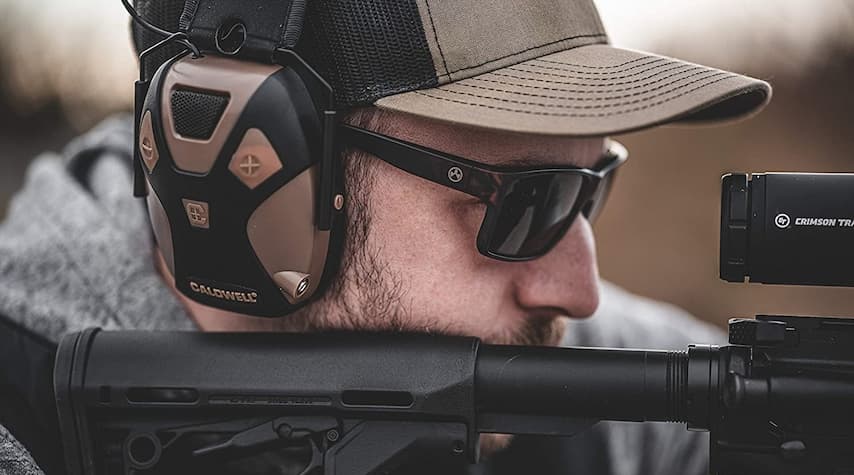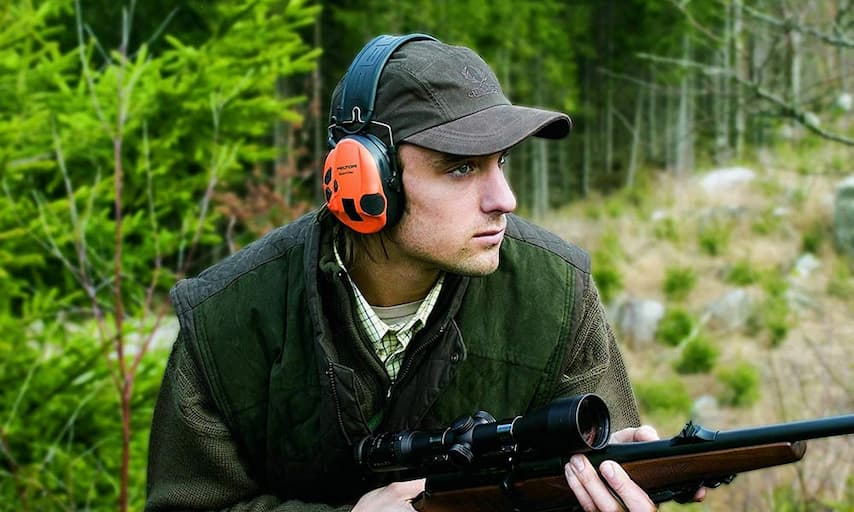For a hunting enthusiast, ear muffs and plugs are among the most useful hunting gear. These devices shield a person’s delicate hearing from explosive noises while allowing them to participate in the action. In other words, wearing high-quality shooting ear protection means being able to shoot to your heart’s content without fear of damaging your hearing.
Can gunshots make you deaf? Yes, they can. Being exposed to gunfire repeatedly over many years can result in permanent hearing loss. In certain situations, even shooting a single shot might cause hearing impairment.
Importance of Ear Protection for Hunting

One of the main causes of hearing loss is excessive noise. Every year, thousands of people suffer hearing loss as a result of loud noises, yet in the majority of cases, it could have been avoided with some basic hearing protection. While audiologists may help you select hearing devices to help you regain a part of your hearing, prevention is always preferable to cure.
Decibels are used to measure noise levels (dB). The louder the noise, the higher the number. Sound levels above 85 decibels are considered hazardous to hearing. The majority of weapon calibres produce noise levels of 140 decibels or more. As a result, hunting ear protection is required when shooting. Hearing protection with an NRR value of 22 or above is required to reduce noise to a safe and comfortable level.
What Types Are Available?
When it comes to shooting ear protection, there are three main varieties that you can use:
Earplugs
This is the least costly choice of the three, so if you’re on a limited budget, this is the one to consider. They are often constructed of foam and are worn in the ear. The less expensive ones are single-use and are discarded after use, making them the least ecologically responsible alternative.
Earmuffs
These are devices that fit over the ears and operate by blocking out sound. Ear muffs for shooting are often more costly than earplugs but are intended to be worn repeatedly. If necessary, they can be used in conjunction with earplugs to provide further protection.
Electronic Earmuffs
This type of protection employs electronics to let a certain amount of sound pass through. It sometimes even collaborates to magnify the noises. Noises over a specific level, on the other hand, are stopped from entering the ear canal. Electronic ear muffs for shooting are especially beneficial for hunters because they allow them to hear conversations while shielding their ears from the sound of bullets. If you are a serious, regular shooter or a professional, this may be your best option.
How to Choose Effective Ear Protection

Regardless of the type of hearing protection you choose, the following are the most important factors to consider when choosing hearing protection.
Noise Reduction Rating
Because noise doubles every 3dB, a high-powered rifle with a peak of 158dB is 600% noisier than a 22 calibre rifle with a peak of 140dB. Choosing a product with a high Noise Reduction Rating is the safest option (NRR). The greater the number, the better the protection.
Fit
It is vital that hearing protection fits properly, especially for those who are new to shooting sports. Padded headbands and the flexibility to adjust earcups on earmuffs assist create a highly comfortable fit for a wide variety of shooters, including youngsters, ladies, and those with smaller heads. Before placing foam earplugs fully into the ears, roll and compress them between your fingers. They must be flush and fully inflated deep into the ear canal to function effectively.
If you opt for an electronic ear muff, you’ll need to consider other factors such as:
Number of Microphones
Electronic ear muffs can use one or more microphones in each ear cup. Keep in mind that the more microphones, the better the sound direction and volume control. Having at least two microphones per ear cup is advantageous if you’re hunting, training, or need increased situational awareness. This will give you a better idea of whether the sound is coming from in front of or behind you.
Noise Gate or Sound Compression
Active ear muff processors manage sound levels in two ways: with a noise gate or with sound compression. When the safe volume level is reached, a noise gate switches off all sounds. A sound compressor operates by “averaging out” all sound: it decreases the level of loud noises while increasing the volume of quiet ones. Noise gated muffs are often more successful in blocking out the sound of gunshots, whereas sound compression muffs give higher situational awareness.
Dynamic vs Adaptive Suppression Time
Although the first explosion of a gunshot delivers the most loudness, echoes and reverberation can induce secondary sounds that are hazardous to a shooter’s ears. When shooting at indoor ranges, this is a regular issue. Dynamic (user-adjustable) or adaptive (automated) suppression times are available in electronic ear muffs. The suppression time indicates how long a potentially harmful noise lasts and how long the hearing protection “turns off” or kills loudness to defend against it.
Maximum Volume
Electronic year muffs have the additional benefit of amplifying sounds. This comes with the need to manage maximum loudness. Amplified noises (which would otherwise be safe) can sometimes become dangerous for the user, therefore the level may need to be lowered. Some electronic year muffs don’t come with volume control. Instead, they modify all sounds for you.
